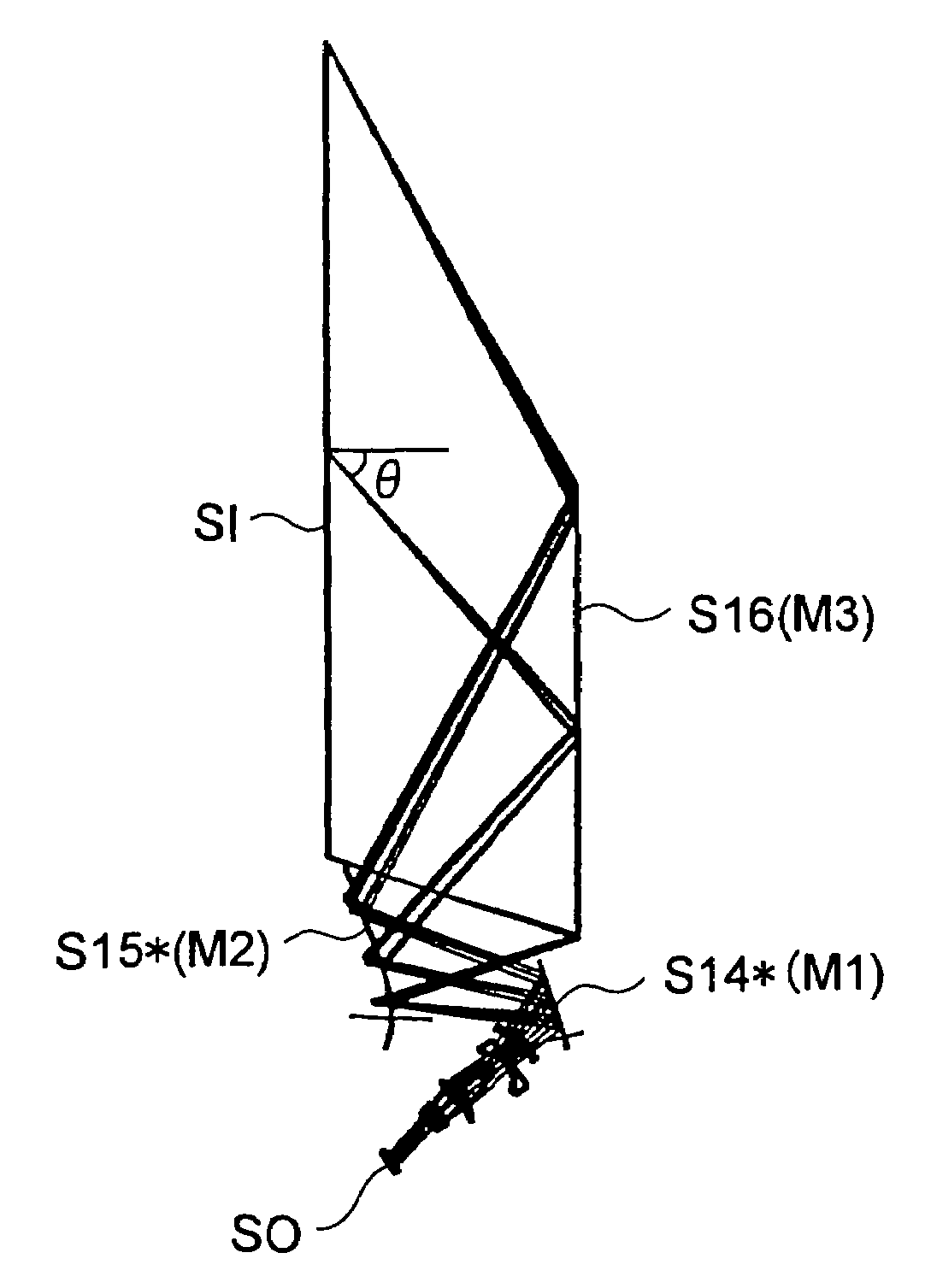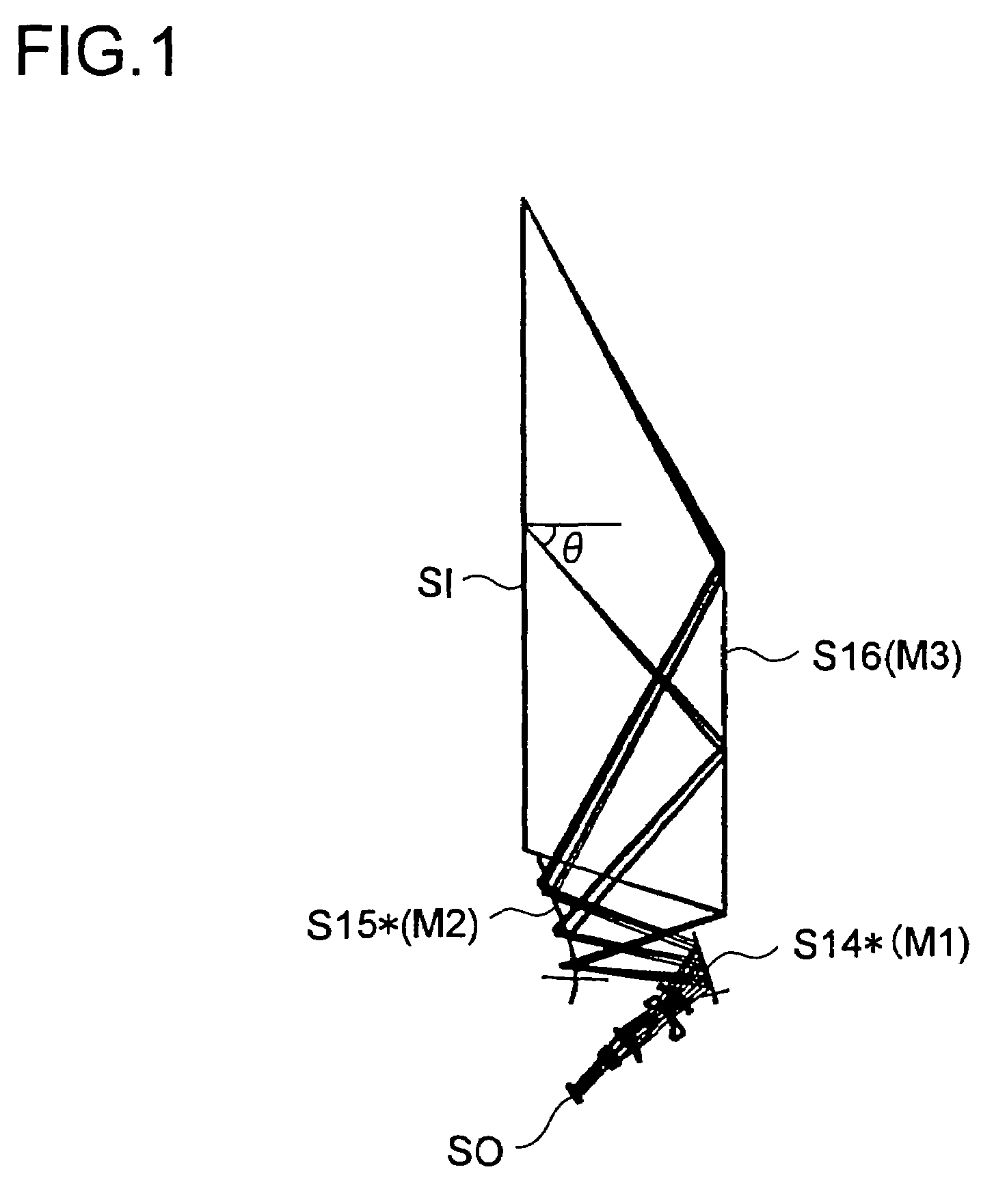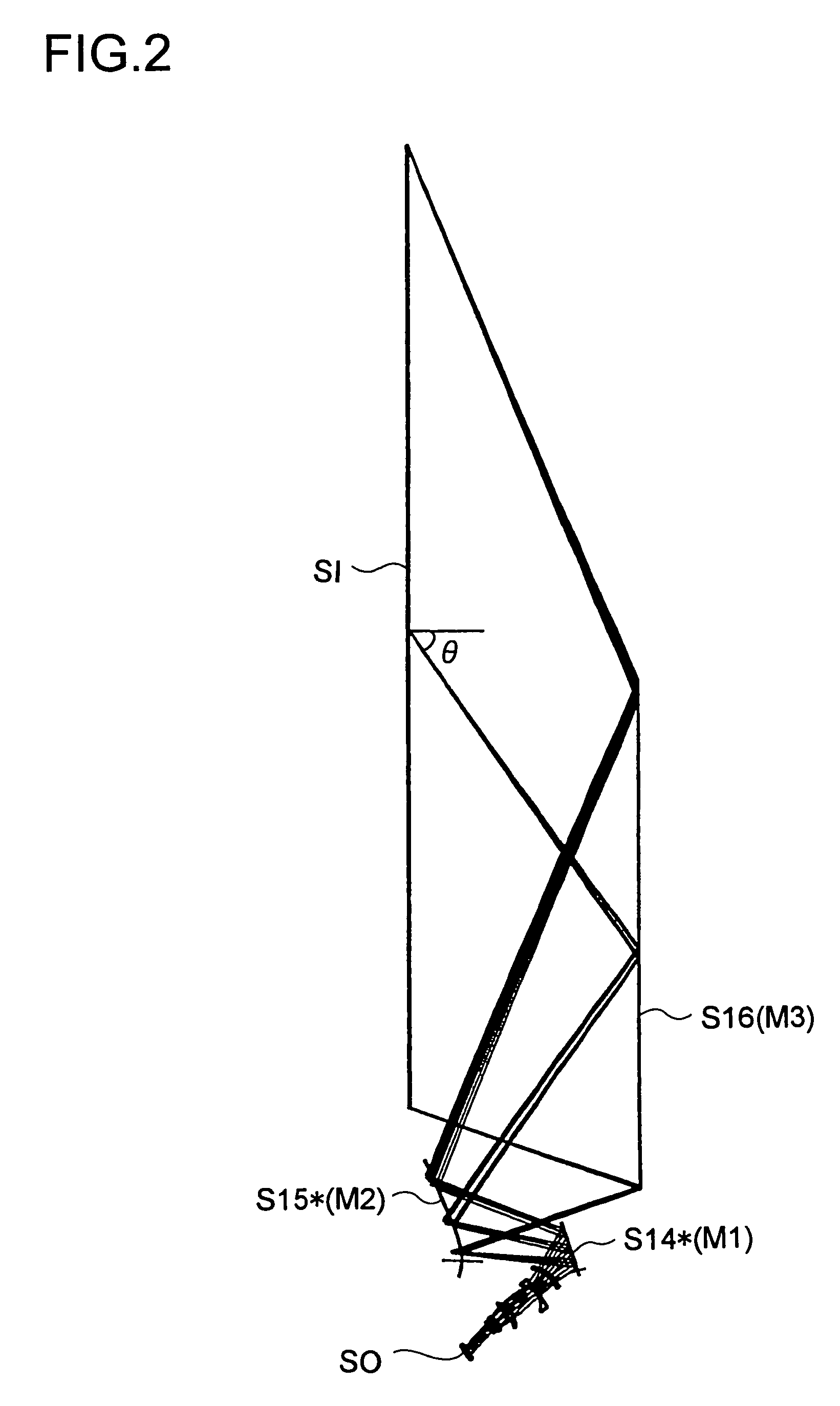Projection optical system
a technology of projection optical system and projection lens, which is applied in the field of projection optical system, can solve the problems of difficult to achieve a wider angle, cannot be done without lengthening the focal length of the refractive lens group, and the lopsided positive direction of the projection sum, so as to achieve good optical performance, large screen, and advantageous in terms of mass production and cost
- Summary
- Abstract
- Description
- Claims
- Application Information
AI Technical Summary
Benefits of technology
Problems solved by technology
Method used
Image
Examples
examples
[0090]Hereinafter, practical examples of projection optical systems embodying the present invention will be presented with reference to their construction data and other data. Examples 1 to 4 presented below are numerical examples corresponding to the first to fourth embodiments described above, and the optical construction diagrams (FIGS. 1 to 8) showing the embodiments also show the optical arrangement, projection optical path, and other features of the corresponding examples.
[0091]Tables 1 to 4, Tables 5 to 8, Tables 9 to 12, and Tables 13 to 16 show the optical construction of Examples 1 to 4, respectively. Of these tables, Tables 1 and 2, Tables 5 and 6, Tables 9 and 10, and Tables 13 and 14 show, in the form of construction data, the optical arrangement of the entire system, specifically from the primary image surface SO (corresponding to the object surface in enlargement projection) on the reduction side to the secondary image surface SI (corresponding to the image surface in...
PUM
 Login to View More
Login to View More Abstract
Description
Claims
Application Information
 Login to View More
Login to View More - R&D
- Intellectual Property
- Life Sciences
- Materials
- Tech Scout
- Unparalleled Data Quality
- Higher Quality Content
- 60% Fewer Hallucinations
Browse by: Latest US Patents, China's latest patents, Technical Efficacy Thesaurus, Application Domain, Technology Topic, Popular Technical Reports.
© 2025 PatSnap. All rights reserved.Legal|Privacy policy|Modern Slavery Act Transparency Statement|Sitemap|About US| Contact US: help@patsnap.com



